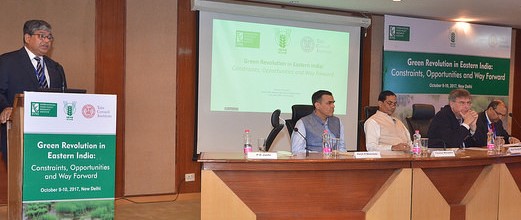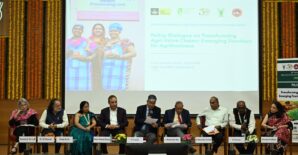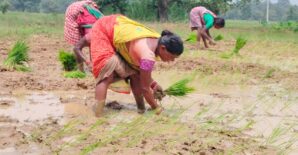Eastern region of India, comprising Bihar, Chhattisgarh, Eastern Uttar Pradesh, Jharkhand, Odisha and West Bengal, accounts for more than 50 percent of nation’s food insecure and poor population. These states could not reap the benefits of Green Revolution which was exceedingly successful in accelerating agricultural production and productivity and reducing rural poverty levels. While the nation takes pride in achieving food self-sufficiency with a record production of 273 million tons and reducing the incidence of poverty from 53 percent in 1977/78 to 21.4 percent in 2011/12, the reality is that the eastern states are quite a distance away from reaching the average national agriculture productivity levels and in mitigating poverty and hunger.
As these states were largely bypassed from the High Yielding Varieties (HYV) seeds and other such technologies and continue to have poor agriculture productivity levels, the Government has embarked upon a major mission, popularly known as BGREI-Bringing Green Revolution to Eastern India. The main focus of this bold initiative has been to augment land productivity as agriculture is the main source of livelihood and employment for majority of rural population in the region.
To understand how this important initiative of the government can be taken forward, the Indian Council for Agricultural Research (ICAR), International Food Policy Research Institute (IFPRI) and the Tata Cornell Institute for Agriculture and Nutrition (TCI) jointly organised a national conference during October 9-10, 2017. The conference was attended 150 delegates. Eminent economists, agricultural scientists and policy makers shared their views on macro as well as micro issues that have been holding back agricultural growth in the Eastern states. The participants deliberated upon several aspects viz. technological, land use, institutional, climate change and risk, investments, food security and migration to find appropriate strategies that would help the Eastern states in unleashing their potential.
Dr Harsh Kumar Bhanwala, Chairman, National Bank for Agriculture and Rural Development (NABARD), attributed low agricultural productivity in the eastern region to small size of land holdings and inadequate rural infrastructure. He laid emphasis on diversification of agriculture by the small farmers to harness the opportunities in horticulture and fisheries activities and income gains. He suggested formation of Farmer Producer Organizations (FPOs) or Aggregators who can provide easy market access to farmers for their produce.
Dr Trilochan Mohapatra, Secretary, Department of Agricultural Research Education (DARE) and Director General, ICAR, highlighted a strong need to bring convergence in policies and efforts from planning to implementation which can help in bringing green revolution in the eastern region. An increased spending on agriculture Research and Development (R&D) and improving extension services can go a long way in increasing crop productivity.
Dr P K Joshi, Director IFPRI-South Asia, IFPRI reiterated that India’s eastern region suffers from natural calamities and is largely rainfed. However, it offers numerous opportunities like utilization of rice fallows, cultivation of non-food crops including fruits-vegetables, and their value addition in processing industry. To harness these opportunities, it is important that these states bridge the yield gaps and have climate smart agriculture. He also emphasised to treat agriculture as an agri-business profession whereby entrepreneurship should be promoted among the farmers. In doing so, business models that are best suited for this region should be explored with adequate financial support by the lending agencies and banks.
The conference concluded with some key recommendations-
- Technological development is critical for accelerated and sustainable agricultural development in the region. Special focus need to be given on adoption of improved seed varieties, System of Rice Intensification (SRI), farm mechanization and conservation agriculture.
- Reforms are needed in inputs delivery chain (seed, fertilizer etc) and promotion of rental markets (farm machinery, irrigation, land) to ensure optimal land and water use.
- Institutional reforms are required in improving agricultural marketing, financing, insurance and formation of FPOs/cooperatives.
- Increase in infrastructural investment by the government in areas such as irrigation, cold chain, reefer vans and other logistics, roads and other transport mechanisms for high value perishable commodities is the need of the hour.




